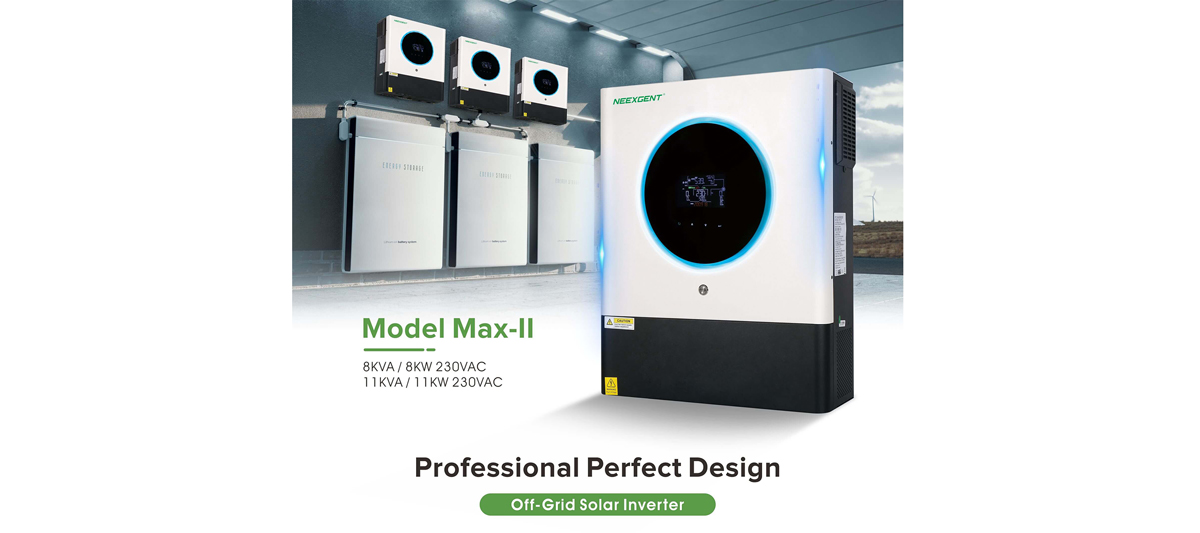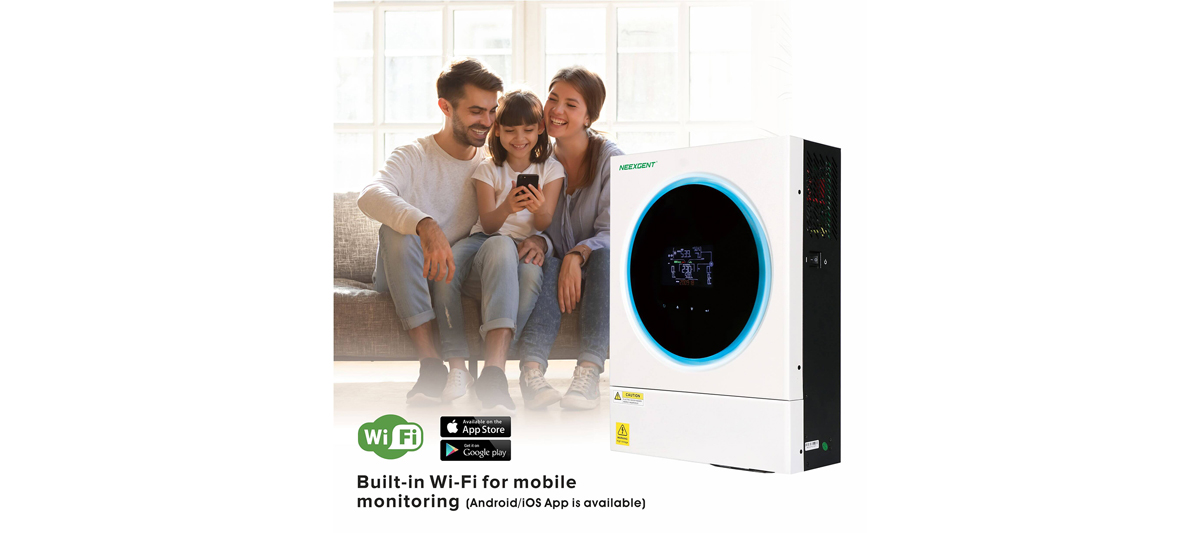In today's technological landscape, the need for efficient and reliable power conversion from direct current (DC) to alternating current (AC) is paramount. Inverter technology plays a vital role in fulfilling this requirement. However, not all inverters are created equal. Two prominent types, high frequency and low frequency inverters, offer distinct advantages and are tailored for different applications. In this comprehensive article, we delve into the comparison between high frequency and low frequency inverters, exploring their operational characteristics, efficiency, size, power output, output waveform, and cost. By understanding these differences, you can make an informed decision when choosing the most suitable inverter for your specific needs.

Off-Grid Solar Inverter MAX II 8000
Operational Frequency:
High frequency inverters operate at frequencies above 20 kHz, often reaching several hundred kilohertz. Conversely, low frequency inverters work at frequencies typically below 2 kHz, generally matching the standard utility power frequency of 50 Hz or 60 Hz. The operating frequency has a significant impact on the performance and characteristics of the inverter.
Efficiency:
Efficiency is a crucial factor when evaluating inverter performance. High frequency inverters excel in this aspect due to their design, utilizing smaller transformers and other components. By reducing power losses, they achieve higher overall efficiency compared to low frequency inverters. However, advancements in low frequency inverter technology have improved their efficiency, narrowing the gap between the two types.
Size and Weight:
High frequency inverters are known for their compact and lightweight nature. The utilization of smaller transformers and components enables them to occupy minimal space, making them ideal for portable and space-constrained applications. Conversely, low frequency inverters are larger and heavier due to the usage of larger transformers. These inverters are commonly deployed in scenarios where size and weight are not critical concerns, such as industrial or backup power systems.
Power Output:
High frequency inverters are suitable for low to medium power applications, typically ranging from a few hundred watts to a few kilowatts. They find common use in consumer electronics, solar power systems, and small appliances. In contrast, low frequency inverters are designed to handle high power applications, ranging from a few kilowatts to several megawatts. They are prevalent in industrial settings, large-scale renewable energy systems, and uninterruptible power supplies (UPS).
Output Waveform:
The waveform produced by an inverter is an essential consideration, particularly for sensitive electronics. High frequency inverters often provide a modified sine wave or a pure sine wave output, depending on the application and the specific design. A pure sine wave output is highly desirable as it delivers cleaner and higher-quality power, ensuring the proper functioning of sensitive devices. On the other hand, low frequency inverters typically deliver a pure sine wave output, which is the preferred waveform for most AC-powered devices and appliances.

Off-Grid-Solar-Inverter-VM-IV-5600-48
Cost:
Cost is a significant factor in any decision-making process. High frequency inverters generally offer a more affordable option compared to their low frequency counterparts. This cost advantage stems from their smaller size and lower material requirements. However, it is important to note that the cost ultimately depends on the specific design, power capacity, and additional features of the inverter.
High frequency and low frequency inverters serve distinct purposes in power conversion applications. High frequency inverters shine in terms of efficiency, compactness, and affordability, making them suitable for low to medium power requirements. Conversely, low frequency inverters excel in high power scenarios, offering pure sine wave outputs and maintaining compatibility with a wide range of sensitive devices. When selecting an inverter, it is crucial to assess your specific needs, considering factors such as power demands, size constraints, waveform requirements, and budgetary considerations.
It is worth noting that advancements in inverter technology continue to blur the lines between high frequency and low frequency inverters. Manufacturers are constantly innovating to improve efficiency, reduce size and weight, and enhance performance across the board. Therefore, it is advisable to stay updated with the latest developments in the industry and consult with experts or reputable suppliers to ensure you have access to the most advanced and suitable inverter options.
The choice between high frequency and low frequency inverters ultimately depends on your specific application, power requirements, waveform needs, size constraints, and budget. By carefully evaluating these factors and understanding the operational characteristics and differences between the two types, you can select the optimal inverter solution that provides efficient, reliable, and high-quality AC power conversion for your intended purpose. Whether it's powering your small electronics or running a large-scale industrial operation, the right choice of inverter will ensure seamless and uninterrupted power supply, enabling your systems to function optimally.

Off-Grid-Solar-Inverter-MKS-IV-5600-48
As technology continues to advance, the field of inverter technology is poised for further innovation and improvement. Here are a few trends and developments that may shape the future of high frequency and low frequency inverters:
- Enhanced Efficiency: Both high frequency and low frequency inverters are likely to witness further improvements in efficiency. Efforts to minimize power losses and optimize component design will result in even higher overall efficiency, leading to reduced energy consumption and increased sustainability.
- Integration of Renewable Energy Sources: With the growing adoption of renewable energy sources such as solar and wind power, inverters will play a crucial role in integrating these sources into the electrical grid. Inverters will need to be capable of efficiently converting the variable DC output of renewable sources into stable and synchronized AC power.
- Smaller Form Factors: High frequency inverters will continue to push the boundaries of compactness and portability. Advancements in miniaturization techniques and component design will result in smaller, lighter, and more versatile inverters, expanding their usability in various applications, including portable electronics and off-grid systems.
- Grid Stabilization and Energy Storage: Inverters will play a pivotal role in grid stabilization and energy storage systems. They will facilitate bidirectional power flow, allowing for the efficient transfer of excess energy from renewable sources to energy storage systems or back to the grid during periods of high demand.
- Smart Inverter Technologies: Inverters are evolving to become smarter and more adaptive. Integration with advanced control systems, communication protocols, and digital interfaces will enable inverters to actively monitor and respond to grid conditions, optimize power output, and facilitate seamless integration with smart grids and home automation systems.
- Improved Waveform Quality: As the demand for clean and high-quality power increases, inverters will continue to evolve to deliver pure sine wave outputs across a wider range of power capacities. This will ensure compatibility with a broader array of sensitive electronic devices and appliances.
The comparison between high frequency and low frequency inverters highlights the trade-offs between efficiency, size, power capacity, waveform quality, and cost. Understanding these distinctions is vital in selecting the most suitable inverter for your specific needs. As technology progresses, both high frequency and low frequency inverters are expected to evolve, offering improved efficiency, smaller form factors, and enhanced integration capabilities. Whether you require a compact and efficient inverter for your portable electronics or a robust power solution for industrial applications, keeping abreast of the latest advancements in inverter technology will empower you to make informed decisions and harness the benefits of efficient and reliable power conversion.








